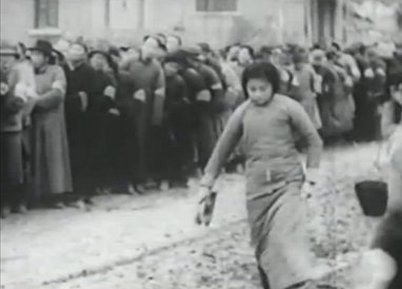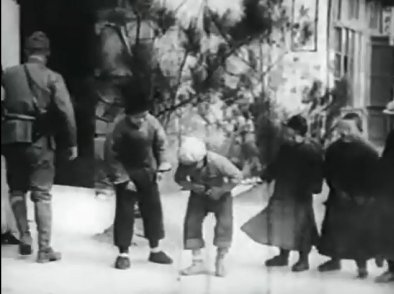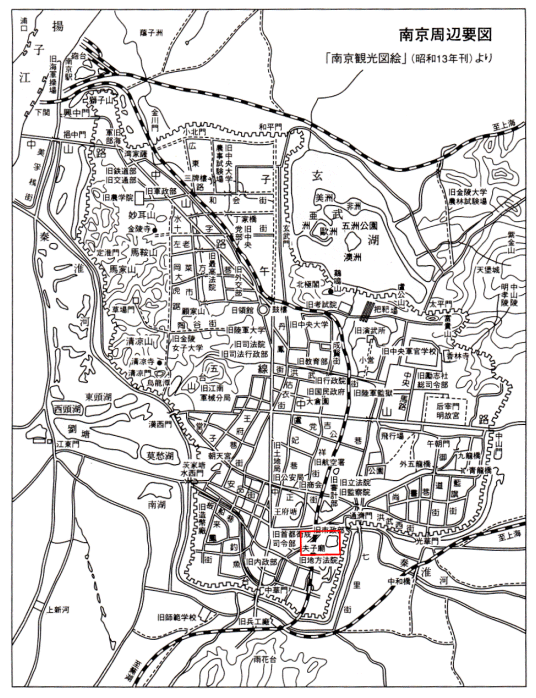in Chronological Order

1937

 |
【Date】December 14
【Place】 【Photographer】Correspondent KADONO 【Description】 Nanking citizens crawl out of air-raid shelters they were hiding under the threat of fierce battles that lasted for days, now feeling safe to hear our Army’s declaration of peace and cessation of war. 【Source】 Jan.5,1938-edition of Asahi-Graph 【Remarks】 Click to enlarge |
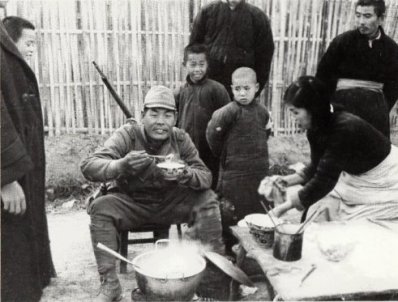 |
【Date】December 15
【Place】Safety Zone alongside the Chungshan North Road 【Photographer】SATO Shinju (correspondent from Tokyo Hibi Shimbun) 【Description】 Mr. Sato’s note states, “I saw an outdoor stall that sold dumplings within the Safety Zone along the east(sic)-side of the Chungshan North Rd. The Japanese soldier I saw appears to be the first customer of the shop. Despite the spread of false rumor that the Japanese soldiers committed mass-murders, soldiers and citizens kept friendly relationships.” 【Source】 p.95, “Nanking Incident Completed” by MIZUMA Masanori Photo Intro, "Rabe's Diary Examined" by UNEMOTO Masaki 【Remarks】 |
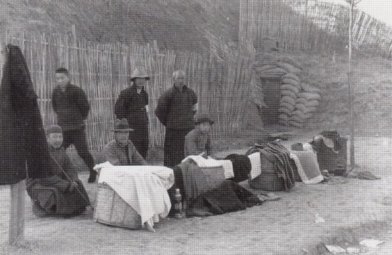 |
【Date】December 15
【Place】Safety Zone along the Chungshan North Rd. 【Photographer】SATO Shinju (correspondent from Tokyo Hibi Shimbun) 【Description】 Mr. Sato’s note states, “On December 15, I saw street vendors selling used clothes inside the Safety Zone facing the Chungshan North Road. I have no idea from where those Chinese brought out the used clothes. The hilly terrain backside seems to be used as air-raid shelters. Entrances of shelters are recognized." 【Source】 Battle History of Nanking, Reference Book II p.93, “Nanking Incident Completed” by MIZUMA Masanori 【Remarks】 |
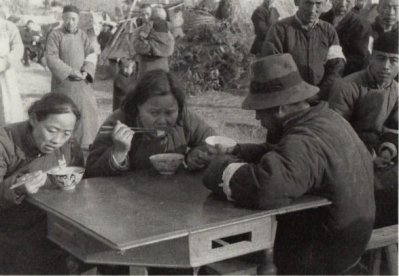 |
【Date】December 15
【Place】Safety Zone 【Photographer】SATO Shinju (correspondent from Tokyo Hibi Shimbun) 【Description】 Mr. Sato’s note states, “There were many refugees who ate dumplings on the 15th, as they seemed to unable to cook at their homes.” 【Source】 p.65, “Truth of History between Japan and Korea/China at Glance” by MIZUMA Masanori 【Remarks】 |
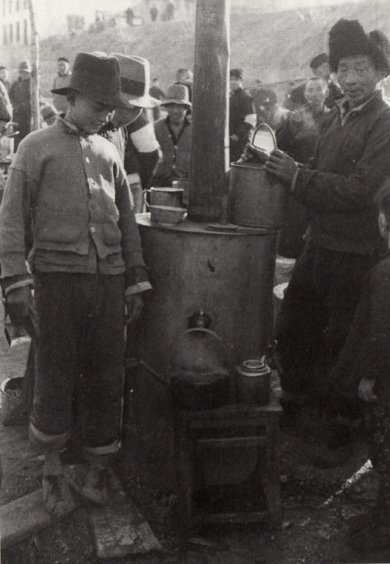 |
【Date】】December 15
【Place】Safety Zone 【Photographer】SATO Shinju (correspondent from Tokyo Hibi Shimbun) 【Description】 Mr. Sato’s note states, “On Dec. 15th inside the Safety Zone, the refugees brought a boiler into the congested Safety Zone from somewhere, and began to sell hot water.” 【Source】 p.65, “Truth of History between Japan and Korea/China at Glance” by MIZUMA Masanori 【Remarks】 |
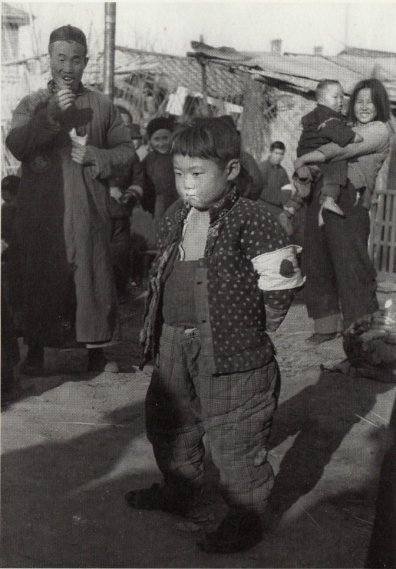 |
【Date】December 15
【Place】Safety Zone 【Photographer】Safety Zone 【December】 Mr. Sato’s note states, “December 15, when I was taking photos inside the Safety Zone, refugees stood before my camera without showing any fear for the Japanese. Those Chinese refugees wore white armband with red sun as a symbol of obedience and their intention of no resistance against the Japanese soldiers.” 【Source】 p.64, “Truth of History between Japan and Korea/China at Glance” by MIZUMA Masanori 【Remarks】 |
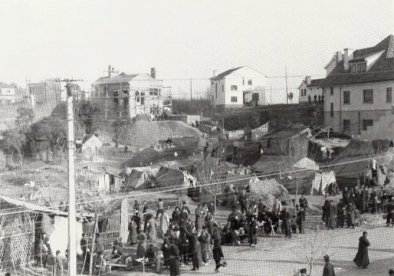 |
【Date】December 15
【Place】Around the intersection between the Chungshan Rd. and the Chungshan North Rd. 【Photographer】SATO Shinju (correspondent from Tokyo Hibi Shimbun) 【Description】 Mr. Sato’s note states, “On December 15 at the central district of Nanking, to the west of crossing between the Chungshan Road and Chunshan North Road, I saw Chinese citizens remaining in the city. As there was a refugee zone inside the Safety Zone, it was difficult to identify who were the refugees or the resident citizens. Compared with the upscale town behind, you can surmise that they were refugees.” 【Source】 p.58, “Truth of History between Japan and Korea/China at Glance” by MIZUMA Masanori 【Remarks】 Click to enlarge Map |
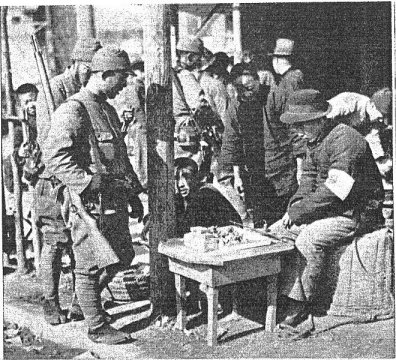 |
【Date】December 17
【Place】 【Photographer】Correspondent KAWAMURA (of Tokyo Asahi Shimbun) 【Description】 After the ceasefire and roar of the field guns died down in Nanking, soldiers enjoy friendship with the Chinse citizens 【Source】Dec.22-edition of the Asahi Shimbun 【Remarks】 According to p,112, “Nanking Incident Completed” by MIZUMA Masanori, the photo was taken on December 17. |
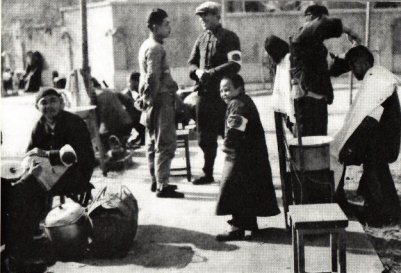 |
【Date】December 17
【Place】 【Photographer】Correspondent TSUMURA (of Tokyo Asahi Shimbun) 【Description】 One street scene inside the Nanking Castle-wall after the peace was restored. They seem to consider that the streets are extension of their houses. Under the protection of our Imperial Army, they restored their day-to-day lives. 【Source】 Jan.12,1938-edition of the Asahi-Graph 【Remarks】 |
 |
【Date】December 20
【Place】One street corner of Chungshan Road 【Photographer】Correspondent HAYASHI 【Description】 Around one street corner of the Chungshan Road, Nanking, we saw Chinese children rejoice with our soldiers raising voice and clapping hands. Toy automobiles and miniature tanks were rolling on the table. Soldiers enjoyed with much laughter too. They seemed to have become kids again, as if they enjoy their pastime with their sons or brothers. This is a street scene of Nanking City on December 20, only one week after the fall of the city. 【Source】 Jan.19,1938-edition of the Asahi-Graph Dec.25-edition of the Tokyo Asahi Shimbun p.91, "Spirit of the Samurai-Code during the Sino Japanese War" by MIZUMA Masanori 【Remarks】 |
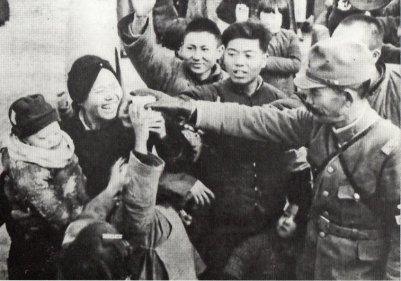 |
【Date】December 20
【Place】 【Photographer】Correspondent HAYASHI 【Description】 Threatened by cruel and barbarous Chinese soldiers, endured the terrible roar of field guns on ground and whizzing flying shells over the sky, the Nanking citizens finally feel safe and get peace of mind at the arrival of the Japanese Army. Receiving food and cakes from our soldiers, they continued saying “Xiexie (thank you)” over and over again. 。 【Source】 Dec.30-edition of Tokyo Asahi Shimbun Jan.27 1938-edition of "China Incident Photographic Magazine" p.88, "Spirit of the Samurai-Code during the Sino Japanese War" by MIZUMA Masanori 【Remarks】 |
 |
【Date】December 20
【Place】 【Photographer】Correspondent HAYASHI 【Description】 Nanking: One swift week has passed after the fall of the city, our Imperial Army extends its warm hands of philanthropic benevolence to the Chinese people who suffer from the diseases. Suffered from agony of war that lasted for several months, they are now saved by kind treatment of the Medical Service Squad. They expressed their appreciation to the Imperial Army by putting their hands together with tears on their cheek. 【Source】 Jan.19,1938-edition of the Asahi-Graph P.90, "Spirit of the Samurai-Code during the Sino Japanese War" by MIZUMA Masanori 【Remarks】 |
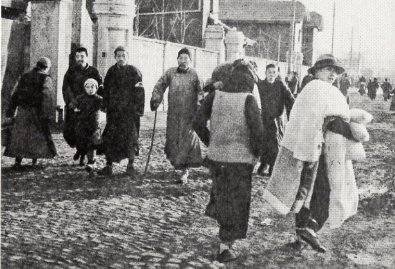 |
【Date】December 27
【Place】 Safety Zone 【Photographer】Correspondent KAGEYAMA 【Description】 Nanking: Enter of our Imperial Army into the city replaced the fear of looting and ravages of war with peace of mind and cheerful faces in the Nanking Refugee Zone. Streets are now packed with people busy for preparation of the coming year. 【Source】 Jan.19,1938-edition of the Asahi-Graph p.94, "Spirit of the Samurai-Code during the Sino Japanese War" by MIZUMA Masanori P.122, “Nanking Incident Completed” by MIZUMA Masanori 【Remarks】 |

1938

 |
【Date】Early January, 1938 (presumably)
【Place】 Safety Zone 【Photographer】 【Description】 "The streets of the Zone are still packed with people:Untold thousands just stand around or barter and trade. The sides of streets are taken over by peddlers, most of them offering food, and old clothes." (p.109, "Good Man of Nanking") 【Source】 Photo intro, "Truth of Nanking" (the Japanese veision of Diary of John Rabe, Kodansha Publishing.) 【Remarks】 Click to enlarge |
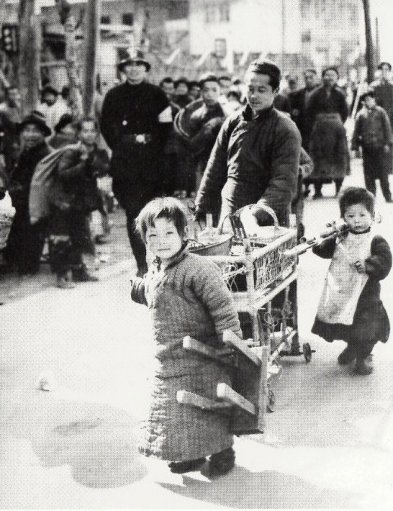 |
【Date】late-February, 1938 (presumably)
【Place】 【Photographer】Correspondent OHKI 【Description】 Nanking: Peddlers move from one street to another. When a whole family moves, we can see a heartwarming scene. 【Source】 Mar.23,1938-edition of Asahi Graph p.131, "Spirit of the Samurai-Code during the Sino Japanese War" by MIZUMA Masanori 【Remarks】 |
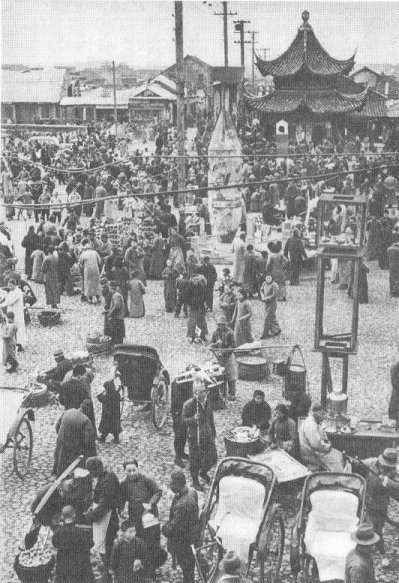 |
【Date】February 20
【Place】Fu Tze Miao (Confucious Temple) 【Photographer】Correspondent OKA 【Description】 【Source】 P.124 "Core of Nanking Incident" by TOMINAGA Shigenobu 【Remarks】 Go to the "Fu Tze Miao (Confucius Temple) " page for more details. |
 |
【Date】Late-February,1938 (presumably)
【Place】Hanchung Road 【Photographer】 【Description】 Hustle and bustle of peddlers and outdoor stalls congested in Hanchung Road, Nanking 【Source】 Mar.21 1938-edition of "China Incident Photographic Magazine" 【Remarks】 Map |
 |
【Date】Mid-March,1938
【Place】Chungshan Road 【Photographer】 【Description】 Japanese Army’s entry into Nanking caused the rising of new spirit in the city, As you see in this photo, Chungshan Road is now congested with people coming and going. 【Source】 GHQ焚書図書開封 7 Asahi-graph (April 6, 1938 edition) 【Remarks】 Map |
 |
【Date】Early-April,1938 (presumably)
【Place】 【Photographer】Correspondent OKA 【Description】 Nanking Citizens marching on streets overjoyed with restoration of peace in the Central China Region and establishment of the new government. 【Source】 May 5, 1938-edition of "China Incident Photographic Magazine" p.138, “Nanking Incident Completed” by MIZUMA Masanori p.133, "Spirit of the Samurai-Code during the Sino Japanese War" by MIZUMA Masanori 【Remarks】 |

